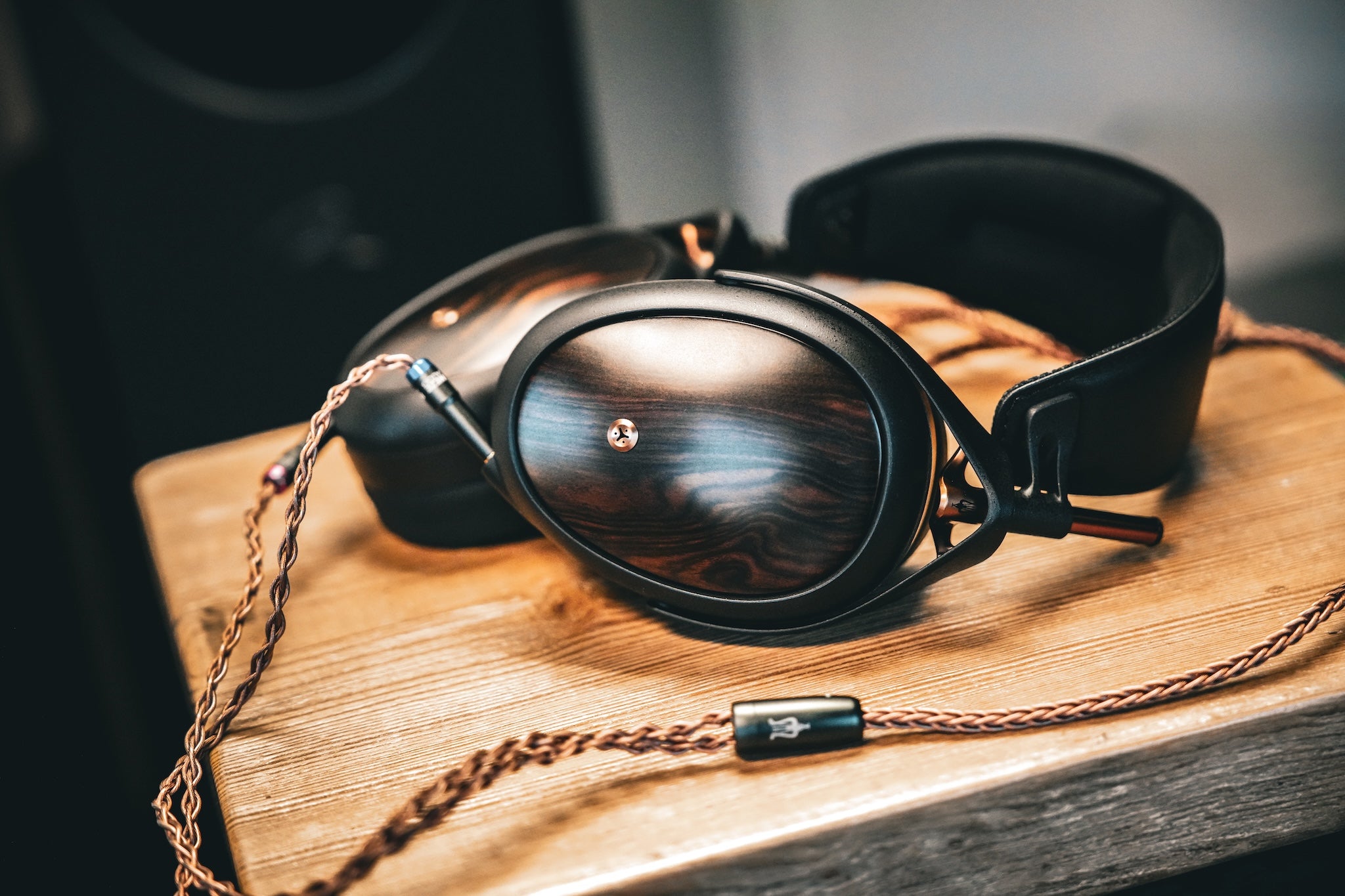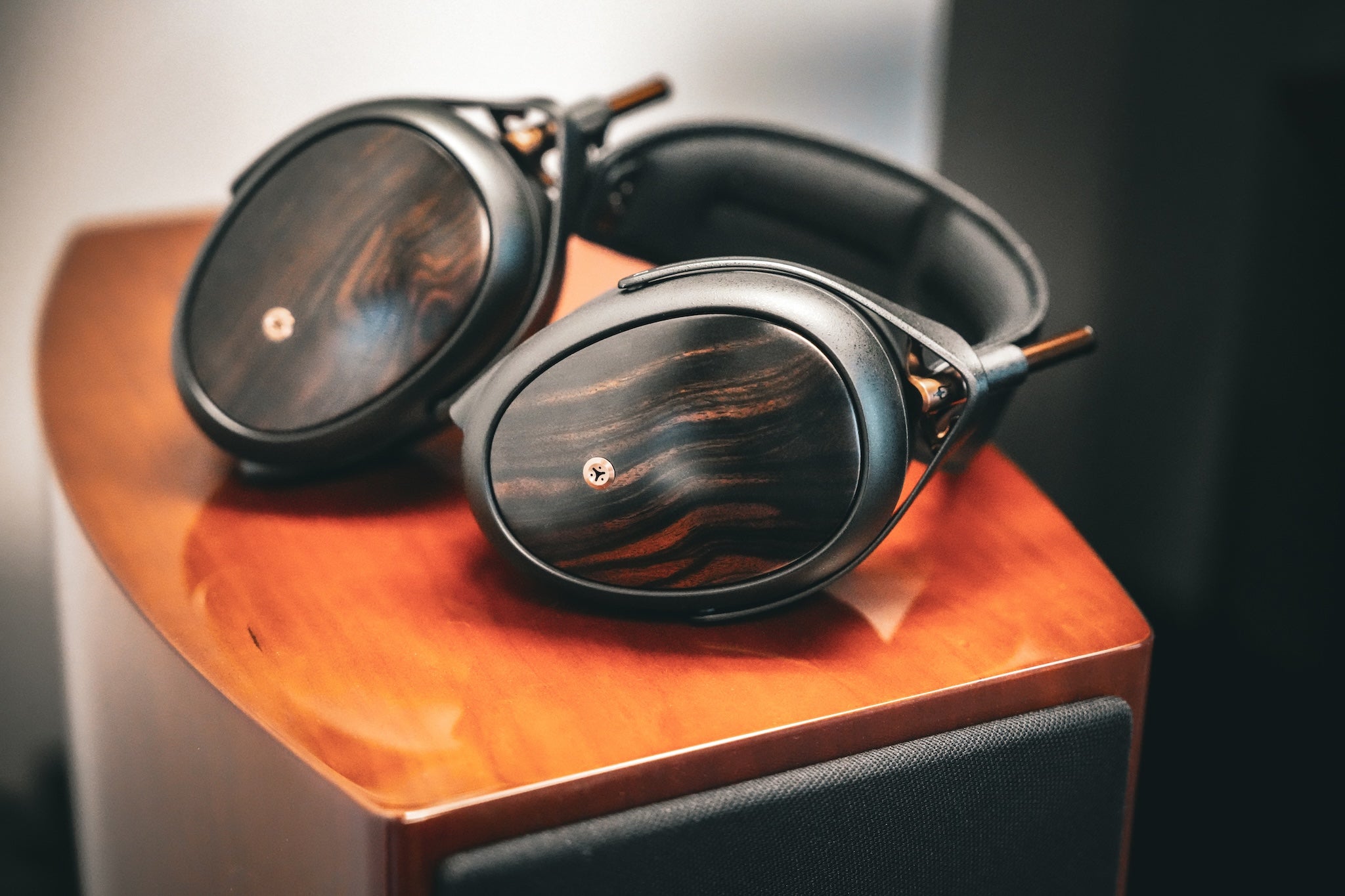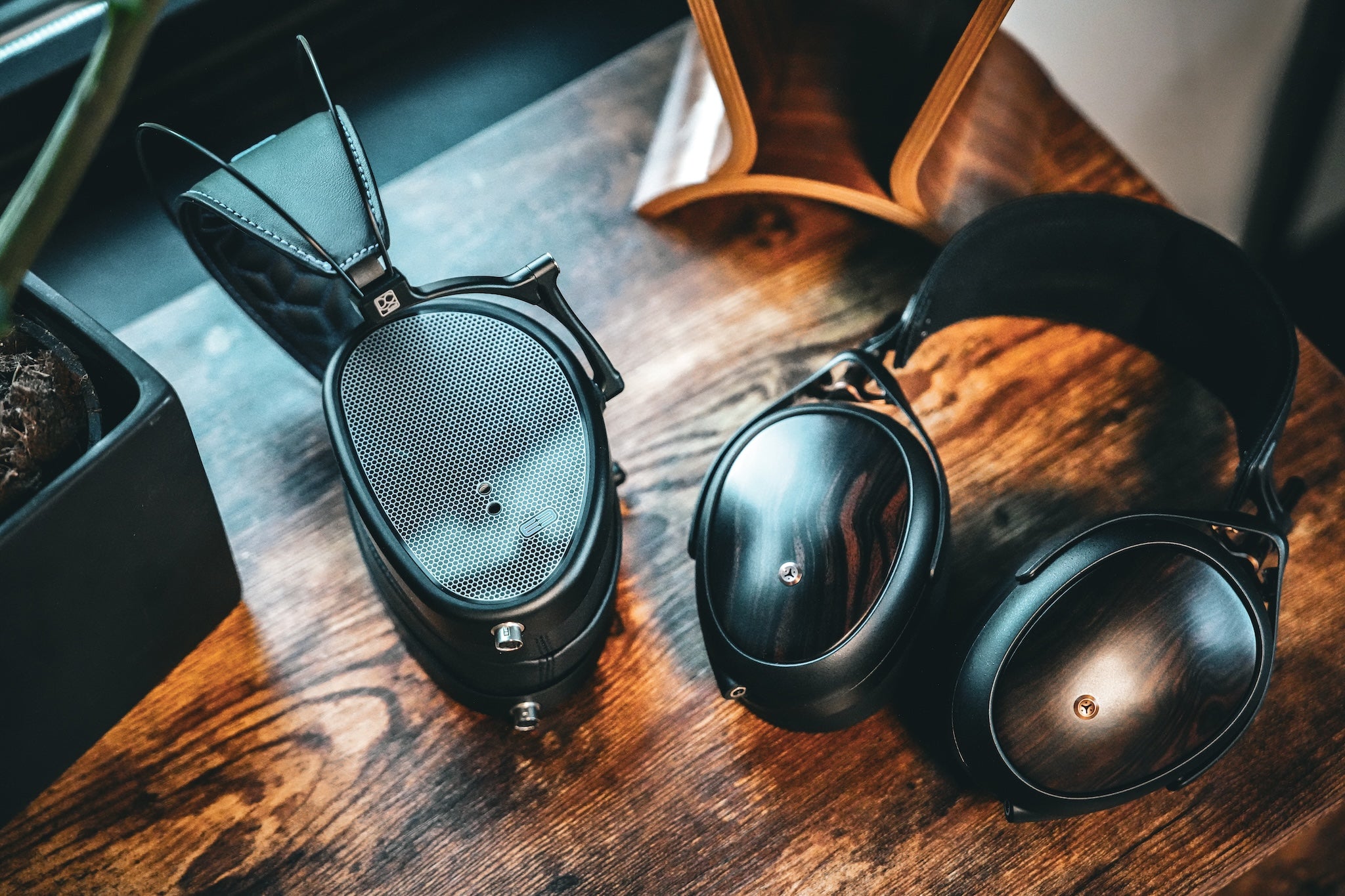When Meze Liric launched it was one of a small number of high-end closed-back planar magnetic headphones on the market. At $2000 it was also nicely situated between flagship closed-backs, like the $3000 Focal Stellia, and a growing number of solid options in the $1000 price range. It brought with it the hallmarks of Meze’s build and design principles, but didn’t quite match the wow factor of the Empyrean or Elite. The tuning also seemed somewhat separated from the rest of the Meze pack. Enter Liric 2. With new wood cups and updates to the sound and technical performance, does Liric 2 bring Liric closer in line with the rest of Meze’s flagship lineup, or does it simply refine Liric’s unique identity?
Build and Design
Liric 2 uses the same basic frame and cushioning as the original Liric, which means that it’s comfortable and generally accommodating for larger heads, but the smaller earpad design can be a little tight if you have larger ears. Unlike the original Liric, Liric 2 features removable earpads with a magnetic attachment – like Empyrean and Elite – for easy earpad swapping. The Macassar ebony earcups add a little weight to the headphones, making Liric 2 a few grams heavier than the original. The weight difference is enough to notice if you’re holding them both in your at the same time, but not enough to notice once it’s on your head.
Liric 2 uses the same Rinaro Hybrid Isodynamic Planar design as Meze’s other flagship headphones, but it’s been slightly returned from the original Liric. Meze has also developed the Quarter Wavelength Resonator mask which helps manage treble peakiness and high frequency reflections in the closed back design. So how much of a difference does the driver tuning and new tech make when listening to Liric 2?
Sound
Liric 2 takes the original Liric’s sound, and basically makes it “more Meze.” One of the ways that Liric stood out from the rest of Meze’s line-up at launch was that where Meze often seemed synonymous with “warm” across their product line, Liric didn’t have that same warmth, but instead had the scales tipped slightly towards “dark” in it’s timbre – emphasizing the low bass and subbass over the mid bass and low mids. Liric 2 maintains Liric’s deep bass, while shifting the balance more towards the classic warmth and fullness of Empyrean. 
The midrange on Liric 2 is still slightly pulled back, but it presents more detail and body to the sound up front. The vocal presentation stands out in the mix, but is less prominent than in the original Liric. There’s also less tendency for shoutyness in the mids – though I still still get a touch from time to time.
In the treble, the emphasis leans more towards the upper extension, with good air in the sound that balances out some of the warmth. Liric 2 largely avoids harsh or shop upper frequencies, and is generally more relaxed than energetic in the treble.
Liric 2 provides a surprisingly large soundstage for a closed-back headphone. One of the key features of its stereo image is a very three-dimensional presentation with a weighty holographic sense to the imaging. The original Liric had a similar soundstage and imaging, but Liric 2 has just a little more width to the stage and a little more of a tactile sense to the individual instruments, enhancing what the original had already done very well.
Listening to “Paradise” by Coldplay, there’s an almost disorienting nature to the Liric 2’s three-dimensional presentation of the airy swirls of synth at the start of the song. The strings sound natural, with a lush, warm sound. When the bass hits, Liric 2’s drivers give a deep rumble while maintaining a rich sense of texture. The kick drum tops off the bass presentation with a great sense of impact. The vocals are forward but not overbearing vocals, and Liric 2’s imaging seems to jump to the next level in the chorus with a sense of height that accompanies the width and depth of the soundstage.
Grover Washington Jr.’s “Let it Flow” lays down a classic smooth jazz groove at the start, with the kick hitting hard, right down the center of the mix. The bassline weaves around the drums with a nice sense of pluck in the relaxed groove. Liric 2’s delivery of the saxophone has an almost impossible blend of clarity and smoothness that beautifully captures Washington’s performance. On top of that, Liric 2 gives the listener a great sense of layout of the instruments and band that really pushes the width of the stage.
Bands like the Pixies always present a challenge as their mix of high energy and occasionally transgressive noise sounds harsh with many headphones, but if the headphones are too smooth or warm, it ends up missing the point. Tracks like “Here Comes Your Man” and “Waves of Mutilation” sound great on Liric 2. You get the grit in the guitar, drums that were hit just a little too hard, and the rest of the messy energy, but with a delivery that doesn’t become fatiguing.
Comparison: Dan Clark E3
If you’re looking for a closed-back, planar magnetic headphone, and your budget is around $2000, there are two clear front runners for your money now: the Dan Clark Audio E3 and the Meze Liric 2. Both are excellent headphones, but it’s likely that one will tickle your ears just a little bit more than the other. Which one is right for you?
In terms of the build and comfort, both are pretty strong, and I think E3 is one of Dan Clark’s best visual designs. E3 is a little heavier, but its smoother suspension system provides a slight edge in comfort, though some might prefer the more firm, snug fit of Liric 2. Visually both have strong, clear aesthetic vision, and it’s really more about what you prefer the look of: E3’s sleek, modern materials, or Liric 2’s classic leather and wood.
In terms of sound, E3 has stronger overall treble presentation, more of a crisp sound, and presents a wider soundstage. Liric 2 counters with more bass impact, and a richer, more natural timbre. E3 has somewhat more spread out, diffuse imaging, while Liric 2 is more weighty and tactile. E3 had some advantages over the original Liric, and while Liric 2 remains similar in character to the original Liric it enhances several aspects of its sound and makes the battle for the best $2000 closed-back, planar magnetic headphone even more competitive.
The Bottom Line
While you can itemize and analyze each small change from Liric to Liric 2 – from the sonic changes to the looks to the engineering behind the update – what strikes me most about Liric 2 is how it just captures the spirit of Meze more than the original did. From the user friendly removable pads, to the warmer sound, and the visual upgrades, it’s not just a better version of Liric, it’s a better Meze Headphone.








